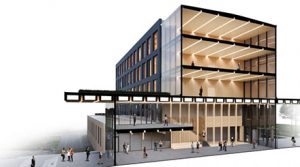US based Katerra is a company taking the building industry to a new level, applying Silicon Valley technology to design and construction. Source: Timberbiz
“Katerra is a new kind of company in the building industry, delivering end-to-end integration with significant investment in technological and design innovation,” Craig Curtis, President of Katerra Architecture, said.
Mr Curtis will be presenting via video at the Timber Offsite Construction conference on Monday 15 June in Melbourne.
Katerra is redefining construction, injecting innovation and maximum efficiency at every scale of its building product and at every step of the development process, from conceptual design to engineering, supply chain, offsite manufacturing and final assembly on site.
Its portfolio of next-generation buildings focuses on maximising structures and systems for building platforms, structural systems, manufactured assemblies, window products, utility systems, and finish materials.
Building design is supported by an extensive research and development program with specialist strategic partners including Michael Green Architecture, Equilibrium Consulting, Washington State University and other global specialists.
Katerra has now developed a range of standard building designs and floor plans for mid-rise residential, commercial and industrial buildings.
A unique feature of Craig’s role as head of Katerra Architecture is to ensure the building feature products don’t have a ‘cookie cutter’ appearance.
He achieves this by creating a catalogue of unique design products manufactured to specification. Craig summarised it as “mass customisation”.
Building construction is based on high precision engineered wood. Katerra is now manufacturing CLT at its Spokane Washington factory, which will produce 180,000 cubic metres per year for processing in the prefabrication plant.
In development of the Katerra prefabrication plant, automotive manufacturing processes were a major influence. An assembly line approach was used based on common building structure platforms with a range of variable options.
The topic will be discussed at the Timber Offsite Construction 2020 Conference & Exhibition to be held on 15-16 June at Crown Promenade Melbourne.
For information visit the website www.frameaustralia.com








